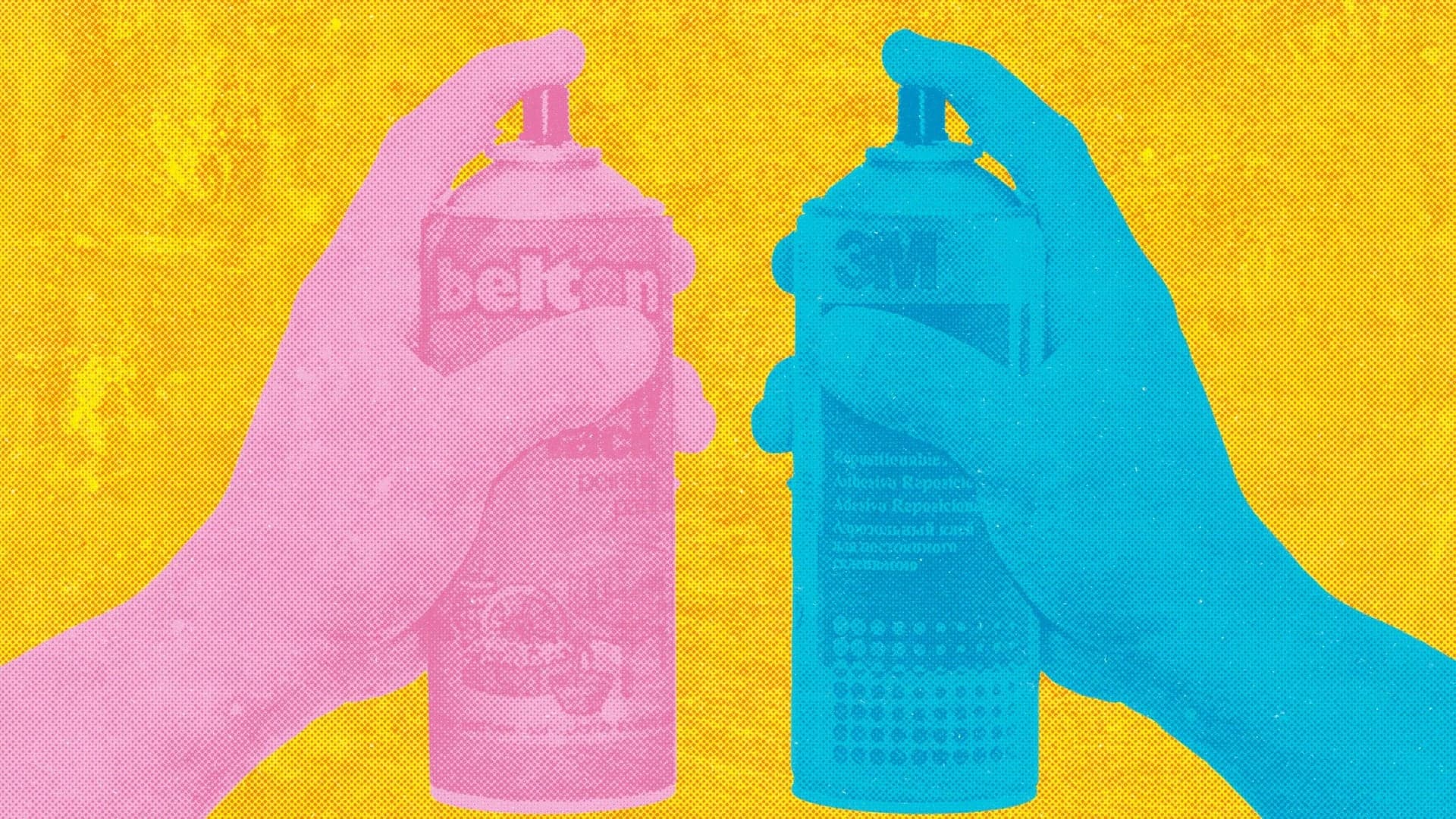When I was around eleven years old, I became obsessed with Graffiti art.
It was the early 1980’s and at least ten years before I would be thrown into the world of layouts, colour theory, typography, and branding. Looking back now after almost 30 years in the creative industry it’s recently dawned on me that my time spent spraying my name laid good foundations for navigating a career in graphic design.
My time in the graffiti world was influenced by the generation before me who made their own rules. They stole their paint, broke into train yards, painted at night, risked their lives (the train lines were electrocuted), and got arrested. All in the name of art.
Those were the rules and that was the Bronx… I was living in Lichfield, a cathedral city in the midlands – so not quite the same. And ironically in an art movement that broke all the rules, if you didn’t follow the rules then you had no respect from your peers. And if that wasn’t enough pressure, you also had to face the judgment of your art which could be regularly crossed out by superior/jealous/angry individuals. Your work only remained untouched for longer once you had gained respect through your connections and skill level. And the biggest sin of all was not being original. Copying someone else (known as ‘biting’) would most likely end up in a witch hunt!
No matter how good you were with pen and paper, painting in the dark and cold, whilst on the lookout is incredibly hard. Not forgetting that back then, there was no paint specially designed for graffiti writers and there were no internet tutorials. It was simply trial and error. The only way you got better was by doing it over and over again and learning from your mistakes.
I’d hung up my spray cans by the mid ’90s, before ‘Street Art’ and the likes of Banksy made it possible to earn a living from the artform – and besides, I was actually feeling more passionate about the world of graphics than graffiti by this time. But my previous decade’s antics had taught me some lessons that have stood me in good stead ever since.
Ask for forgiveness rather than permission
If you wait for permission to do anything then you’ll miss a lot of opportunities. If you have an idea, then go for it. You never know, it may lead to something interesting.
Practice makes progress
You only get better by doing it repeatedly. If there’s a skill you’re lacking or if a skill you have is being underused in the workplace, don’t wait for a relevant job to land on your lap – make one up and keep yourself in tip-top condition.
Progress, not perfect
Perfectionism is another form of procrastination. If you aim for perfection then you will struggle to produce anything, let alone on time. For me, ‘perfection’ is a bonus.
Be seen
Whether graffiti or graphics, the ultimate aim is getting eyeballs on the work. It may be the placement, the design, or the message… it’s the same for both worlds.
Resilience
There is a myriad of things that could make you want to give up when painting graffiti, particularly in the early days when you’re still practicing your craft. The same can be said for the design world. Being open to criticism and dealing with rejection (whether you agree with it or not), will happen a lot, no matter how experienced you are. Being able to move on from a knockback is critical.
Be consistent but flexible
‘Fame’ in the graffiti world means adopting a style and writing your name consistently over and over again in as many places as possible. Big spots, small spots, high or low you have to find a way to make your ‘brand’ fit the space. It’s no different to a flexible visual identity.
Working to a deadline
Painting graffiti in its illegal sense rarely allows the luxury of stopping halfway through and finishing the next day. You have a short window to get in, get the job done, and get out. Failure to do that could result in getting arrested! Hitting a deadline in a production-led industry is absolutely essential and adopting a ‘whatever it takes’ attitude or working with a team you can trust to get the job done will help a lot.
So, in a nutshell… Don’t be afraid to give something a go. Do it again and again until you get really good at it. Avoid the pitfalls of perfectionism, being responsive and adaptable is far more useful. Don’t be disheartened by negative feedback and always hit the deadline.
As a set of skills, they are hard to be taught. It takes time, experience, and the right mindset to make them part of your toolkit. Just go out there, put them into practice (and don’t get caught ;-).
Contact Martin for any of your design needs: ml@cwa.co.uk.



